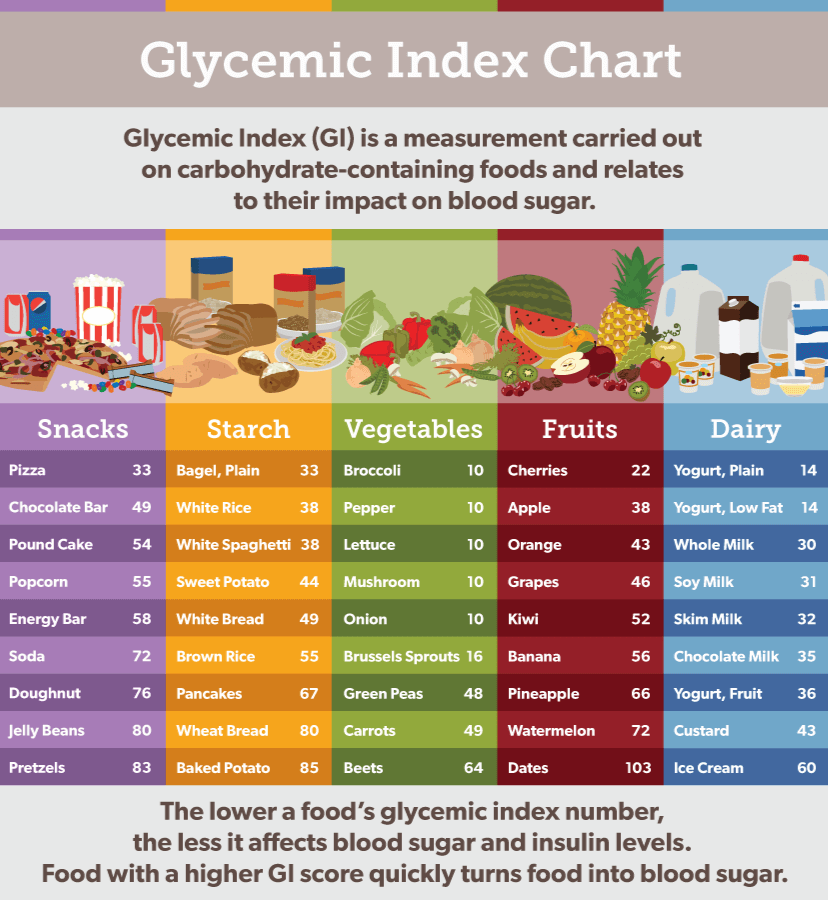It’s based on a scale that ranges from 0 to 100. High GI (>70) foods are characterized by quick absorption rates and large fluctuations on blood sugar levels. Low GI (<55) foods are characterized by slow absorption rates and a gradual rise in blood sugar levels.
Less than 55 are “low” (mostly complex carbohydrates)
55 <–> 70 are “medium”
More than 70 are “high” (mostly simple carbohydrates)
The general consensus is that high GI foods should be avoided because they spike blood sugar levels, igniting the overproduction of insulin, the process that stores excess glucose as fat. The index has several flaws, however.
1. The index only lists single foods. When we combine several foods to prepare a meal, it lowers the value of the Glycemic Index.
2. Food preparation (boiling, frying, baking, etc.) alters the value of the Glycemic Index.
3. The Glycemic Index is not a one size fits all; people have different individual blood glucose responses and individual results may vary.
4. Foods that are considered unhealthy have low GI values (i.e. ice cream, cake, chocolate).
Here is a helpful chart by SPS Thrive.
